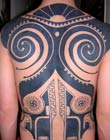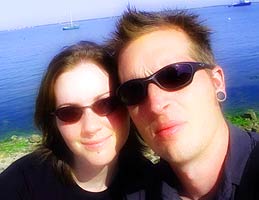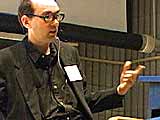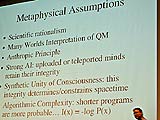
BME.COM 2005 Year End Awards Thanks for another great year! With your help, BME continues to go strong as it enters its twelfth year. In this wrap-up article, I’d like to thank a few specific people who helped BME grow in 2005. These lists are just the best of best (or the biggest of the best if you’d like) — thanks must also go out to the thousands and thousands of people who made smaller but still important contributions, to say nothing of the paying members and BMEshop customers who make it possible to keep the servers online. In 2005, BME received about 60 gigabytes of image submissions totaling approximately 300,000 files. Of those, 188,485 images met our standards and were posted to the site. These successful image submissions came from 24,257 people and were posted in 151 separate updates. Along with those pictures, 7,234 stories and articles were posted and reviewed by site members, and 4,803 articles were posted to the BME newsfeed — almost all by volunteers. Overall top image contributors The competition was fierce this year and the numbers are quite staggering. BME/HARD members were competing with both professional piercers and with event photographers for the top spot. Below are the winners for the overall top image contributor of the year:
|
2. 4,159 images  stained steel |
|||
3. 3,733 images

kokomi.3k
4. 3,242 images

KitanoKaryuudo
5. 2,044 images

RussFoxx
6. 1,990 images

perk900
7. 1,523

vampy
8. 1,354

VEAL
9. 1,353

Allen Falkner
10. 1,229

peo52
11. 1,150

hypermike
12. 909

stainless
13. 872

dispel
14. 859

Lexci Million
15. 848

KIVAKA
16. 833

Urban Soul
17. 832

Joao Caldara
18. 824

bena
19. 762

jonathanpiercing
20. 712

Hornet
21. 708

giselle
22. 653

bastard
23. 612

Ars Bonus Gallery
24. 607

wildirishrose
25. 559

joker
26. 510

UREA
27. 507

freakypumper
28. 504

j_scarab
29. 501

Rings of Pleasure
30. 489

Anonymous
31. 475

Anonymous
32. 468

nobcatz
33. 450

Guerella
34. 441

Crazy Glamour
35. 434

RAFAEL
36. 431

Efix
37. 411

rwethereyet
38. 406

deb
39. 397

HeadlessLego
40. 391

mc4bbs
41. 384

Vex Hecubus
42. 354

holey13
43. 353

matt bruce
44. 336

Bea und Lehni
45. 326

Tranquility
46. 325

holierthanthou
47. 320

piercer_dave
48. 313

rollsplitt
Top image contributors per month
And let’s break it down by month as well:
January 1. vampy (871 images) 2. Big Rick (520 images) 3. matt bruce (216 images) 4. KIVAKA (210 images) 5. kokomi.3k (171 images) |

1. VEAL (241 images)
2. Big Rick (232 images)
3. KIVAKA (173 images)
4. 667 (170 images)
5. Anonymous (137 images)

1. stained steel (276 images)
2. Big Rick (240 images)
3. kokomi.3k (174 images)
4. Anonymous (144 images)
5. Crumbs (132 images)

1. stained steel (1,268 images)
2. Allen Falkner (796 images)
3. kokomi.3k (337 images)
4. KitanoKaryuudo (318 images)
5. bastard (251 images)

1. hypermike (486 images)
2. stained steel (448 images)
3. kokomi.3k (419 images)
4. KitanoKaryuudo (271 images)
5. rollsplitt (201 images)

1/2. Big Rick (448 images)
1/2. stained steel (448 images)
3. kokomi.3k (419 images)
4. gastaum (221 images)
5. KitanoKaryuudo (191 images)

1. Big Rick (1,346 images)
2. perk900 (707 images)
3. RussFoxx (685 images)
4. KitanoKaryuudo (615 images)
5. Anonymous (454 images)

1. kokomi.3k (916 images)
2. Allen Falkner (553 images)
3. giselle (397 images)
4. dispel (356 images)
5. vampy (276 images)

1. stained steel (954 images)
2. Big Rick (436 images)
3. RussFoxx (348 images)
4. Anonymous (309 images)
5. dispel (256 images)

1. Big Rick (704 images)
2. kokomi.3k (412 images)
3. KitanoKaryuudo (322 images)
4. deb (277 images)
5. Crazy Glamour (160 images)

1. KitanoKaryuudo (767 images)
2. RussFoxx (580 images)
3. bena (488 images)
4. Anonymous (404 images)
5. mc4bbs (282 images)

1. stained steel (823 images)
2. kokomi.3k (624 images)
3. KitanoKaryuudo (433 images)
4. VEAL (304 images)
5. wildirishrose (243 images)
Top image contributors per section
To make it more fair, I’ve also broken down the winners per section. Most of the names are still familiar, but this also shows you some of the niche contributors who helped keep some of the more difficult sections alive:
Tattoos 1. Big Rick (3,528 images) 2. bastard (629 images) 3. j_scarab (260 images) 4. babakhin (186 images) 5. Efix (158 images) 6. Anonymous (152 images) 7. RAFAEL (150 images) |

1. stained steel (1,464 images)
2. KIVAKA (675 images)
3. Lexci Million (337 images)
4. piercer_dave (214 images)
5. holey13 (199 images)
6. holierthanthou (199 images)
7. alienboy (150 images)

1. perk900 (433 images)
2. hypermike (360 images)
3. Joao_Caldara (318 images)
4. matt bruce (294 images)
5. stained steel (204 images)
6. UREA (152 images)
7. vampy (144 images)

1. stained steel (2,090 images)
2. RussFoxx (1,930 images)
3. Allen Falkner (1,347 images)
4. vampy (1,115 images)
5. bena (718 images)
6. stainless (663 images)
7. dispel (661 images)

1. perk900 (1,145 images)
2. Big Rick (643 images)
3. newaddict (257 images)
4. spot (197 images)
5. Allen Falkner (176 images)
6. Lexci Million (169 images)
7. B-boy (162 images)

1. jonathanpiercing (511 images)
2. mc4bbs (391 images)
3. emilio gonzalez (214 images)
4. old soldier (173 images)
5. stardust99 (165 images)
6. Anonymous (141 images)
7. Anonymous (124 images)

1. kokomi.3k (3,733 images)
2. KitanoKaryuudo (3,218 images)
3. VEAL (1,264 images)
4. peo52 (1,229 images)
5. Hornet (712 images)
6. Urban Soul Bonus Gallery (692 images)
7. Ars Bonus Gallery (612 images)
Most diverse image contributors
While some contributors tended to submit in just a few categories of BME, other people submitted to many different galleries (piercers especially). In 2005, 739 galleries were updated at some point during the year. The following people deserve recognition for having an active involvement in a wide range of activities covered on BME:
1. stained steel (71) 2. holey13 (62) 3. KIVAKA (55) 4. Lexci Million (55) 5. Efix (50) |
6. j_scarab (50) 7. alienboy (47) 8. babakhin (43) 9. holierthanthou (42) 10. redneckzombi (42) |
11. HollywoodPiercer (42)
12. el tio pincho (40)
13. Joao_Caldara (39)
14. bob-omb (39)
15. RAFAEL (38)
Most consistent image contributors
Some people submitted only occasionally but in large numbers — for example, folks who documented conventions and events. Others contributed on a more constant basis, meaning that any given update was likely to have an image from them. Of the 151 separate updates posted to BME in 2005, the following people were represented in the largest number of them:
1. KIVAKA (61)
2. Lexci Million (60)
3. j_scarab (55)
4. alienboy (51)
5. Joao_Caldara (45)
Top experience authors
I was blown away by the number of articles some people wrote this year, with the top place being a tie of a story submitted on average every twelve and a half days for the entire year! Here are the top authors of 2005:
#1. 29 stories kyo |
#1. 29 stories cuthalcoven |
#3. 21 stories aniorange |
|||
 BlueStar (18) |
|||||

psychonautje (15)

Lozza_mc (15)

\wolfbane (15)

Skip3s (14)

Paindreamer (14)

hunterjackson (12)

Anonymous (11)

Ebowlotus1960 (11)

WarMaiden (11)

Anonymous (11)

Flutterfly (11)
Honorable mentions (10 experiences): gothicphoenixx, d’Latta, and Orilind.
Top experience reviewers
When experiences are posted they first have to move through a moderation process whereby members of the site determine what should be posted and what needs to be sent back for revision first. Of the 7,526 experiences that were posted, the following list shows which reviewers were successfully involved in getting those ones posted (so this doesn’t include the experiences that were rejected):
1. Ebowlotus1960 (3,387)
2. deadly pale (2,759)
3. cuthalcoven (2,618)
4. Frisky_Vixen666 (2,608)
5. dressxupxdollie (2,442)
6. Yknits2001 (2,374)
7. Skip3s (2,159)
Top BME newsfeed contributors
BME’s newsfeed is maintained by a small team of volunteers (anyone can submit stories) who troll news sites finding any articles that might be of body modification interest to readers of BME. The following people posted the greatest number of stories to the newsfeed:
1. rebekah (2,337)
2. Ebowlotus1960 (881)
3. CajunChefClay (392)
4. piercedjenny (336)
5. Frisky_Vixen666 (334)
BME/News Interns and Staff
In 2005, BME brought on two interns to develop content for BME/News. Much thanks to them for their hard work and articles, and good luck on their future ventures, writing and otherwise:
 snackninja Read all of Jordan’s articles |
 typealice Read all of Gillian’s articles |
In addition, the following people maintained a column in 2005 on BME:
 The Lizardman |

Jim Ward

FREE

Fakir Musafar

Princess_Poop
QOD Staff
As it has for years now, BME’s QOD staff tireless answers body modification questions from the public. Here are the members who posted regularly over 2005:
 MONTE |

Gary

shawn.spc

spikesandstuds

amorphous

LexTalonis

vampy

The Fog

j_scarab

Lassi
BMEshop
BMEshop is a small family business that runs independently from (but is still partnered to) BME. Here’s who makes sure that your BME swag and body modification gear gets to you quickly and at a fair price:
 badseeds |
 tcie |
BME Core Staff and Volunteers
And, of course, BME’s core staff of volunteers and employees:
 badur Badur’s done a wide range of things for us including being held hostage by a hostile ISP! |

CT
CT helps with server maintenance, especially with our IIS servers.

PhilipBarbosa
Phil does much of the day-to-day image processing.

1101001
Jon maintains and administers many of our UNIX servers and also does development work.

dita
Dita runs BMEjapan.com

Jen
Jen handles customer support email and manages the experience moderation system.

Rachel
Rachel runs the business and financial end of BME and also does server maintenance, installation, contracting, moving, and more.

glider
That’s me, Shannon!
I have almost certainly forgotten people from this list, and for that I apologize! I’ve also I’ve left off related projects like wlfdrgn‘s IAM scholarship, Shawn Porter‘s SPC, and Crow‘s Modified Mind, folks that contribute to ModBlog, that all deserve their own credit as wel.
But what did they win?
Everyone you saw mentioned on this page gets a limited edition 2006 BME staff shirt (in whatever color they’d like). The design is based on military unit shirts for those of you who don’t have family in the armed forces, and the latin on the front says “free will”. Anyway, if you see someone wearing one of these, you can bet that they made significant contributions to BME (or perhaps robbed someone who did), and thus influenced the future of the body modification community with their input (thus “PROPHET”) on the back.

But wait — there’s more! You know I love making t-shirts, so instead of just one staff shirt design for 2006, I’ve made two for winners to choose from. If they appear on this page once, they can choose one of the two shirts, and if they appear more than once, they get both. Shirt number two (available in any color but black or white) is a picture of BME’s pinup of the year, Eva (KitanoKaryuudo) — click here for a closeup:

In addition, the top five image contributors won $100 gift certificates to BMEshop, as did the top three experience authors. Oh, and everyone here got free access for a year (not that they need it since they contribute so often). I wish I could give out more prizes!
Thanks again everyone for a great year. Big things are in store in 2006 on a lot of levels; a new content management system, a rewrite of IAM, some new sociopolitical projects, tons and tons of free stickers, and more. I think you’ll like what’s coming…

Shannon Larratt
BME.com



















































